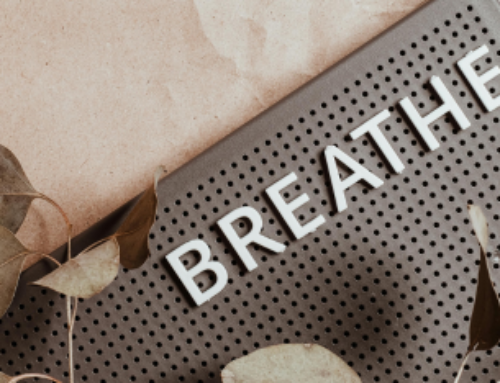Asthma is a chronic condition that affects the airways, leading to breathing difficulties, coughing, and wheezing. While conventional treatments like inhalers and medication provide critical relief and management, complementary approaches are gaining traction for their ability to improve long-term respiratory health. Among these is the Buteyko Method, which has shown promise in helping asthma sufferers manage their symptoms naturally.
What is Buteyko Breathing?
Developed by Dr. Konstantin Buteyko in the 1950s, the Buteyko Breathing Method is a series of exercises designed to retrain breathing patterns. The method is based on the principle that over-breathing, or hyperventilation, contributes to respiratory disorders like asthma. Hyperventilation reduces carbon dioxide levels in the blood, disrupting the oxygen delivery system and triggering airway constriction.
The Buteyko Method aims to normalize breathing by:
- Encouraging nasal breathing instead of mouth breathing.
- Reducing the breathing rate to a more natural, calm rhythm.
- Maintaining proper carbon dioxide levels for optimal oxygen exchange.
These simple yet effective strategies can improve respiratory function, reduce reliance on medication, and enhance overall quality of life for individuals with asthma.
How Buteyko Breathing Benefits Asthma Patients
1. Reduction in Asthma Symptoms
By promoting nasal breathing and reducing hyperventilation, the Buteyko Method can help decrease the frequency and intensity of asthma attacks. Restoring ideal CO2 tolerance and normalising breathing parameters help keep asthma symptoms at bay.
2. Decreased Medication Reliance
Studies have shown that individuals practicing the Buteyko Method often experience reduced dependence on rescue inhalers and corticosteroids. While the technique is not a replacement for medication, it can complement conventional treatments and, over time, reduce the need for medication.
3. Improved Sleep Quality
Asthma symptoms often worsen at night, disrupting sleep. Buteyko exercises improve airflow and reduce airway inflammation, helping individuals breathe more easily and sleep more soundly.
4. Lower Anxiety Levels
Asthma can create a cycle of fear and over-breathing, exacerbating symptoms. The Buteyko Method restores ease in breathing, reducing feelings of panic and anxiety.
5. Empowerment and Self-Management
Learning and practicing Buteyko techniques empowers asthma sufferers with tools to manage their condition proactively. This sense of control can significantly enhance mental well-being and resilience.
The Science Behind Buteyko Breathing
The physiological foundation of Buteyko lies in its ability to restore ideal CO2 tolerance, which then restores normal breathing regulation.. Contrary to popular belief, carbon dioxide is not just a waste product; it plays a crucial role in oxygen delivery. Known as the Bohr Effect, this principle explains that hemoglobin releases oxygen more effectively in the presence of adequate carbon dioxide levels.
Hyperventilation reduces carbon dioxide, leading to symptoms such as airway constriction and reduced oxygen availability—common issues in asthma. By slowing and calming the breath, Buteyko helps restore this balance, allowing for improved oxygenation and reduced airway inflammation.
Several clinical studies support the effectiveness of the Buteyko Method:
- A study published in Thorax found that Buteyko training led to significant improvements in asthma control and reduced reliance on bronchodilators.
- Research in the Journal of Asthma reported improved quality of life and reduced symptoms among participants who practiced Buteyko breathing techniques.
Case Studies: Real-Life Transformations
Case Study 1: Emma, a 12-Year-Old with Severe Asthma
Emma had struggled with asthma since early childhood, often experiencing attacks during physical activity and cold weather. Her parents were concerned about her reliance on high-dose inhalers and sought complementary therapies.
After participating in a Buteyko breathing course, Emma learned to shift from mouth breathing to nasal breathing and to control her breathing rate during stressful situations. Over six months of consistent practice:
- Emma’s asthma attacks decreased from weekly to occasional.
- She reported feeling more confident engaging in sports.
- Her use of a rescue inhaler reduced by 70%.
Emma’s mother shared, “The Buteyko Method has given Emma a sense of control over her asthma. It’s been life-changing for our family.”
Case Study 2: Mark, a 45-Year-Old Office Worker
Mark, a longtime asthma sufferer, found that work stress and sedentary habits exacerbated his symptoms. Despite using daily inhalers, he often felt breathless and fatigued.
Mark attended a series of Buteyko workshops, where he learned:
- To monitor his breathing patterns using the Control Pause Test, a tool to measure breath-hold time as an indicator of respiratory health. He was able to recognise downward shifts in his breathing health and apply the tools he learned to address it.
- Simple exercises to calm his breathing and reduce hyperventilation.
Within three months:
- Mark’s Control Pause score improved from 15 seconds (severe hyperventilation) to 30 seconds (mild hyperventilation).
- He experienced fewer episodes of shortness of breath during work hours.
- He began sleeping more peacefully, with reduced nighttime asthma symptoms.
Mark reflected, “I never realized how much my breathing habits were affecting my health. Buteyko has been a game-changer.”
Case Study 3: Sarah, a Fitness Enthusiast
Sarah loved running but often experienced exercise-induced asthma (EIA), especially during cold months. Frustrated with her limitations, she explored the Buteyko Method.
Over a six-week period, Sarah worked on:
- Breathing exclusively through her nose during workouts.
- Practicing Buteyko exercises before and after runs to maintain steady breathing.
The results were remarkable:
Sarah’s EIA symptoms almost disappeared.
- She could run longer distances without needing her inhaler.
- Her overall endurance and recovery improved.
Sarah shared, “Buteyko taught me to breathe smarter, not harder. It’s made all the difference in my training and everyday life.”
How to Get Started with Buteyko Breathing
Getting started with the Buteyko Method is simple and accessible to most people, regardless of age or fitness level. Here are some foundational steps:
1. Consult a Certified Practitioner
A trained Buteyko instructor can assess your breathing patterns, guide you through tailored exercises, and customize the approach to meet your unique needs. At The Breathe Clinic, I provide comprehensive Breathing Assessments and specialized Breathe Buteyko Courses designed to help you breathe better and live healthier.
2. Practice Nasal Breathing
Commit to breathing through your nose both day and night. If nasal congestion is an issue, a practitioner can recommend techniques to alleviate it.
3. Relaxation
Incorporate activities you enjoy but do not increase your heart rate into your daily routine to help you relax. Relaxation naturally calms your breathing.
Asthma can feel like an overwhelming condition, but tools like the Buteyko Method offer a pathway to greater control and improved health. With its emphasis on natural breathing and self-management, Buteyko empowers individuals to take charge of their respiratory health.
The success stories of Emma, Mark, and Sarah are just a glimpse of the transformative potential of this approach. While not a replacement for medical treatment, the Buteyko Method is a valuable complement, helping asthma sufferers breathe easier and live more fully.
If you or a loved one are managing asthma, consider exploring the Buteyko Breathing Method as a step toward better health and well-being. Breathing better is living better—and with Buteyko, that goal is within reach.







Leave A Comment